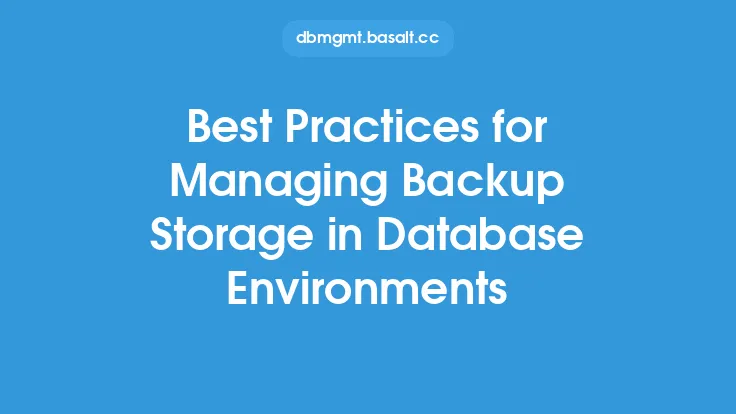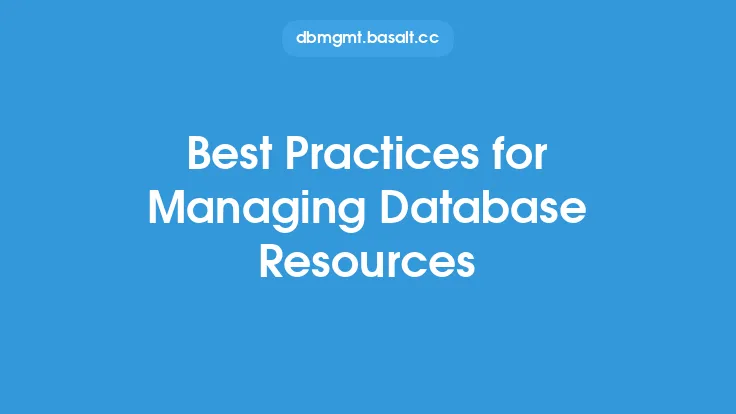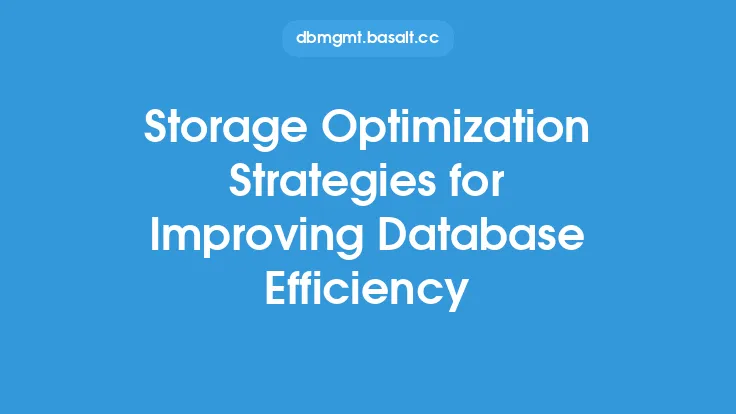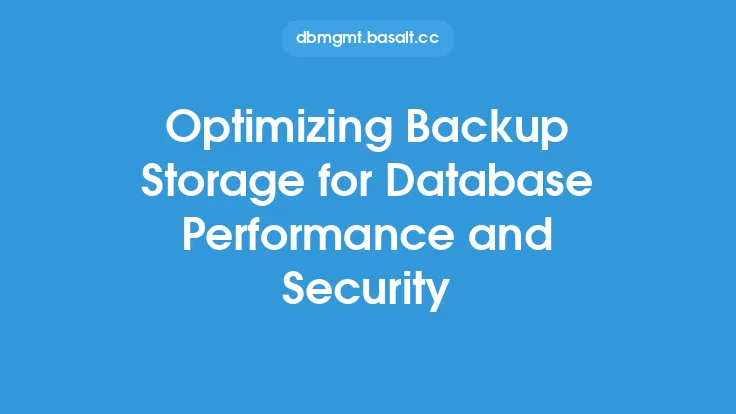As databases continue to grow in size and complexity, managing storage growth and optimization has become a critical aspect of database administration. The ever-increasing amount of data being stored, combined with the need for fast and efficient data retrieval, has made it essential for database administrators to implement best practices for managing database storage. In this article, we will explore the key strategies and techniques for managing database storage growth and optimization, providing database administrators with the knowledge and tools needed to ensure their databases run efficiently and effectively.
Introduction to Database Storage Management
Database storage management involves a range of activities, including monitoring storage usage, optimizing storage capacity, and ensuring data integrity. Effective database storage management is critical to ensuring that databases perform well, are scalable, and can handle increasing amounts of data. It also helps to reduce storage costs, improve data retrieval speeds, and ensure that data is properly backed up and recovered in case of a disaster. Database administrators must have a deep understanding of their database's storage requirements, including the type of data being stored, the storage capacity needed, and the performance requirements of the database.
Monitoring Storage Usage
Monitoring storage usage is a critical aspect of database storage management. Database administrators must be able to track storage usage in real-time, identifying trends and patterns that can help them anticipate and prepare for future storage needs. This can be done using a range of tools and techniques, including database management system (DBMS) built-in tools, third-party monitoring software, and custom scripts. By monitoring storage usage, database administrators can identify areas where storage is being wasted, optimize storage capacity, and ensure that data is properly backed up and recovered.
Optimizing Storage Capacity
Optimizing storage capacity involves a range of techniques, including data compression, data deduplication, and storage tiering. Data compression reduces the size of data stored, while data deduplication eliminates duplicate copies of data. Storage tiering involves storing data on different types of storage media, such as hard disk drives (HDDs), solid-state drives (SSDs), and flash storage, based on its performance and capacity requirements. By optimizing storage capacity, database administrators can reduce storage costs, improve data retrieval speeds, and ensure that data is properly backed up and recovered.
Implementing Data Retention Policies
Implementing data retention policies is critical to managing database storage growth. Data retention policies involve defining how long data should be kept, how it should be stored, and when it should be deleted. By implementing data retention policies, database administrators can ensure that data is properly managed, reducing the risk of data loss, corruption, or unauthorized access. Data retention policies can be implemented using a range of tools and techniques, including DBMS built-in tools, third-party software, and custom scripts.
Using Storage-Aware Database Design
Storage-aware database design involves designing databases with storage efficiency in mind. This includes using efficient data types, indexing strategies, and query optimization techniques. By using storage-aware database design, database administrators can reduce storage costs, improve data retrieval speeds, and ensure that data is properly backed up and recovered. Storage-aware database design also involves considering the storage requirements of different types of data, such as transactional data, analytical data, and archival data.
Leveraging Automation and Orchestration
Leveraging automation and orchestration is critical to managing database storage growth and optimization. Automation involves using tools and scripts to automate routine tasks, such as monitoring storage usage, optimizing storage capacity, and implementing data retention policies. Orchestration involves using tools and scripts to manage complex workflows, such as data migration, data replication, and disaster recovery. By leveraging automation and orchestration, database administrators can reduce the risk of human error, improve efficiency, and ensure that databases run smoothly and efficiently.
Best Practices for Database Storage Management
Best practices for database storage management involve a range of activities, including monitoring storage usage, optimizing storage capacity, implementing data retention policies, using storage-aware database design, and leveraging automation and orchestration. Database administrators should also consider the following best practices:
- Regularly monitor storage usage and performance
- Optimize storage capacity using data compression, data deduplication, and storage tiering
- Implement data retention policies to ensure data is properly managed
- Use storage-aware database design to reduce storage costs and improve data retrieval speeds
- Leverage automation and orchestration to reduce the risk of human error and improve efficiency
- Consider using cloud-based storage solutions to improve scalability and reduce costs
- Ensure that data is properly backed up and recovered in case of a disaster
Conclusion
Managing database storage growth and optimization is a critical aspect of database administration. By implementing best practices, such as monitoring storage usage, optimizing storage capacity, implementing data retention policies, using storage-aware database design, and leveraging automation and orchestration, database administrators can ensure their databases run efficiently and effectively. By following these best practices, database administrators can reduce storage costs, improve data retrieval speeds, and ensure that data is properly backed up and recovered. As databases continue to grow in size and complexity, the importance of effective database storage management will only continue to grow, making it essential for database administrators to stay up-to-date with the latest techniques and strategies for managing database storage growth and optimization.





